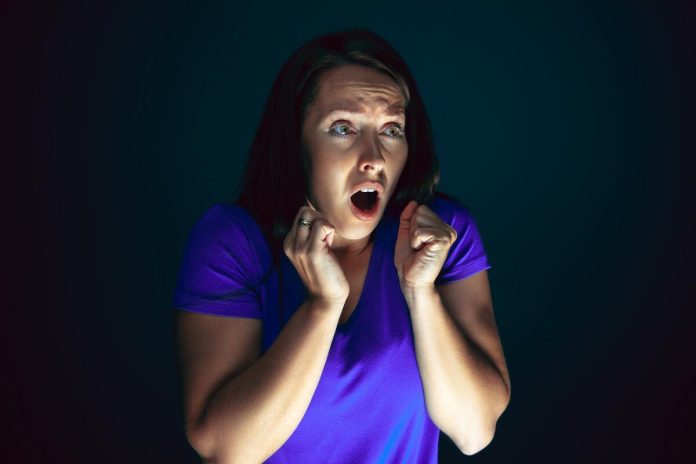Fear is a natural feeling but it can turn into crippling fears that take over people lives. This piece goes into the complicated psychology of fear, explaining how it works scientifically and discussing the different fears that affect many people. We chat about the profound effects of fears give you tips on how to get over them and use real life success stories to inspire you. Understanding how fear works is the first step to taking back control of one life.
The Study Of Fear
Fear is a natural feeling that has helped us stay safe in dangerous scenarios. It is a natural biological reaction that prepares our bodies to face or run away from danger. The amygdala is one of the most essential parts of the brain for processing things that make us afraid.
When we sense a threat the amygdala starts the famous fight or flight reaction. Stress hormones such as adrenaline are released during this reaction. These hormones make us more alert and ready to move. This highly tuned way of staying alive has worked well for people throughout development.
Common Phobias
- Arachnophobia: Fear of spiders, frequently caused by a feeling of danger linked with these animals.
- Acrophobia: Fear of heights can make you anxious in tall buildings or heights.
- Claustrophobia: A fear of enclosed areas that causes discomfort in elevators, tunnels, or tiny rooms.
- Agoraphobia: Avoid crowded places due to a fear of open or public locations.
- Social Anxiety Disorder: Fear of social circumstances which frequently leads to avoidance of meetings and public speaking.
- Ophidiophobia: A fear of snakes caused by the possible harm they represent.
- Aviophobia: Worries about plane safety usually cause the fear of flying.
- Dentophobia: Fear of dentists and dental treatments causes negligence.
- Trypanophobia: Fear of needles or injections which causes anxiety during medical treatments.
- Claustrophobia: Fear of enclosed places causes discomfort in elevators tunnels or tiny rooms.
The Effects Of Phobias
Phobias are more than just unfounded worries; they can have huge, long-lasting effects on a person’s life, hurting their mental health and ability to go about their daily life.
- Anxiety and Panic Attacks: Phobias are a type of anxiety condition, and being exposed to something that makes you anxious or scared can cause severe anxiety and panic attacks. These events can be essential and upsetting.
- Avoidance Behavior: People with fears will often do anything to avoid things or events that scare them. Avoiding things can hurt your personal and professional life and make you feel alone.
- Quality of Life: Because of their fears, people with phobias may miss out on events, social interactions, and job chances that would have otherwise been good for them.
- Physical Signs: Being exposed to phobic triggers can cause physical signs such as shaking shivering nausea shortness of breath and a fast heart rate.
- Coexisting Conditions: Some mental illnesses like sadness and generalized anxiety disorder can happen at the same time as a phobia. This can make the effects on mental health even worse.
- Isolation: People with social fears may avoid social situations and activities leading to loneliness and social isolation.
- Health Consequences: Putting off needed checkups and treatments because of a fear of the doctor or dentist can harm your health.
How To Overcome Phobias: Tips And Tricks
Getting over fears is possible, and several methods have been shown to work. These methods give people the tools to face and overcome unfounded fears, which improves their mental health and quality of life.
Using Exposure Therapy
One of the most essential parts of treating phobias is exposure therapy. It involves slowly and methodically facing the thing or situation you are afraid of in a safe and calm place. Over time, repeated contact weakens the fear reaction and makes people less sensitive to what makes them scared.
Cognitive-behavioral Therapy (CBT)
CBT is a perfect way to treat fears. It helps people figure out what crazy thoughts and beliefs they have about their worries and question them. By changing negative thought processes, people can change how they see the phobic trigger.
Medicines
Some people with phobias may be given medicine to help with the physical effects of their fear and worry. During exposure treatment or when facing a phobic scenario, anti-anxiety drugs or beta-blockers can help ease the physical effects.
Using Self-help Methods
Self-help methods like deep breathing, relaxing routines, and visualizing can be used with therapy. These techniques give people the tools to deal with their nervousness and gain the courage to face their fears.
Exposure Therapy Using Virtual Reality
Virtual reality offers a fresh way to treat phobias. People who are going through virtual reality exposure treatment are put in virtual settings that are like the things that make them afraid. This gives them a safe and controlled way to face and deal with their fears.
Conclusion
Studying fear and phobias in psychology is fascinating and can give hope to people with illogical fears. Learning about the science behind fear, common phobias, how they affect people, and effective ways to treat them are the first things people can do to overcome their fears. Real-life success stories show that change is possible, and getting professional help when needed can lead to a life without fear. Remember to overcome even the worst fears with the right help and tactics.

